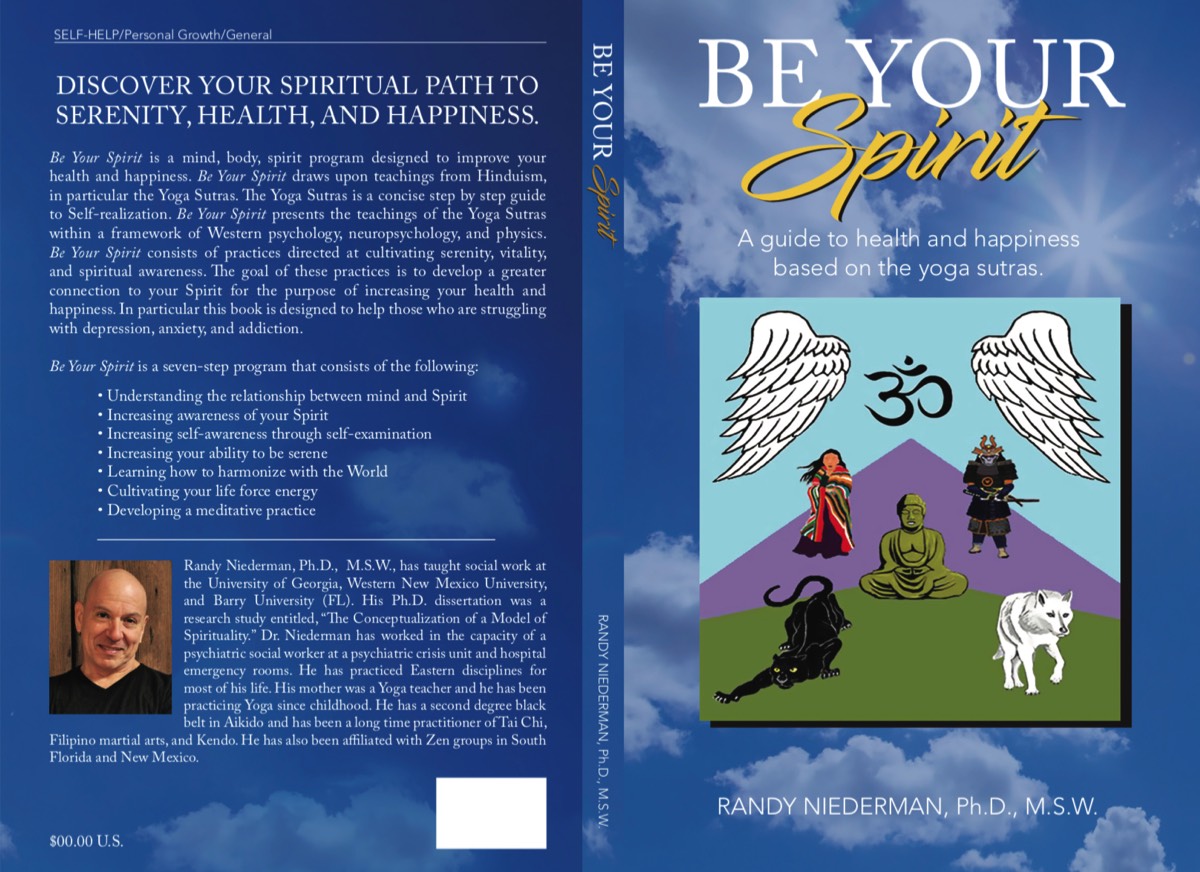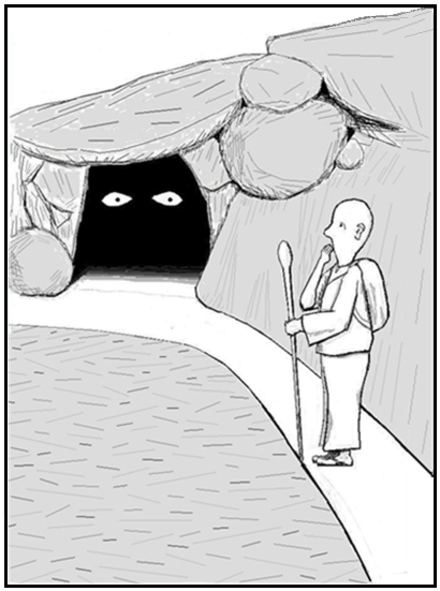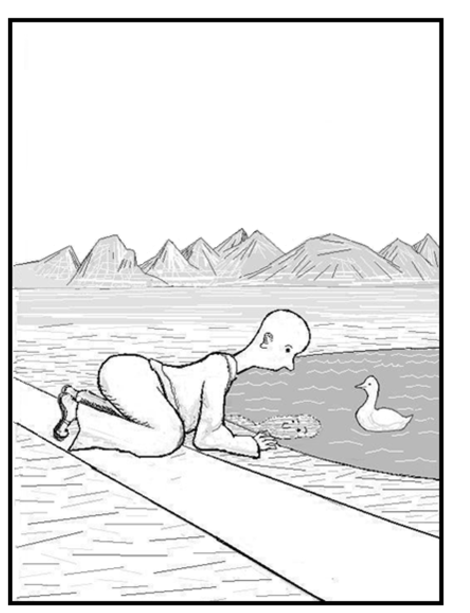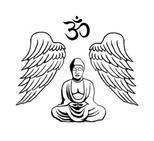
Book Sample
Be Your Spirit
175 pages
17 Illustrations by the author
Numerous guided exercises
_______________
Below you will find:
The book's complete introduction
Table of Contents
An overview of each chapter
Introduction
Spirituality involves a belief in a spiritual dimension. The term spirit refers to the non-material, which is an aspect of reality that does not obey the laws of the material world. The most basic characteristic of spirituality is a belief in an unseen spiritual dimension that permeates physical reality. The spiritual dimension exists everywhere. Some people understand it as God, while others view it as a form of energy. It does not matter what you call the spiritual dimension as it cannot be defined by words, or understood through logical thought.
Belief in a spiritual dimension is based on direct experience. Some people are naturally connected to the spiritual and begin to have spiritual experiences at a very early age. Others are blind to the spiritual and dismiss spiritual experience as coincidence, imagination, or distorted perception.
A second characteristic of being spiritual is that it involves a personal relationship with the spiritual dimension. It is your personal connection to the spiritual world that makes your spirituality real, otherwise it is just an idea. The clearer your experience of the spirit world the more influence it will have on the meaning of events in your life.
A final characteristic of spirituality is that it involves a belief that you have an individual Spirit. The concept of an individual Spirit is paradoxical in that it is both individual and part of a larger spiritual dimension. If the larger spiritual dimension was an ocean, your Spirit is like a droplet falling from a wave. As the droplet falls through the air it is your individual Spirit. When the drop hits the water your individual Spirit ceases to exist and merges with the ocean.
Although your Spirit is separate from the larger spiritual dimension it remains connected to it. Your Spirit is your connection to spirituality. Among other things, your Spirit provides you with access to knowledge, healing power, strength, wisdom, and joy.
Understanding the relationship between yourself and your Spirit is fundamental to many Eastern spiritual traditions. This understanding provides insight into who you are, what you are, and the meaning of your life. Eastern traditions call this process Self-Realization.
Self-realization
Why seek Self-realization? Why bother with changing your life to have a greater connection with your Spirit? Self-realization is a state of awareness characterized by clarity, authenticity, and serene happiness. The ultimate goal of seeking Self-realization is to find meaningful happiness. Self-realization is more of an orientation toward a goal than a state of accomplishment. Meaningful happiness is found on the journey to Self-realization rather than arrival at its destination. The attainment of Self-realization is not as important as the benefits you gain by seeking it.
Table of Contents
INTRODUCTION
Communicate with your Spirit
Intuition: Listen to your Spirit
Symbolism: Look for Messages
Dream Awareness Exercise
Spiritual Ecstasy: Be Spirit
A Trance Dance Exercise
Seeking Your Spirit through Devotion
Spirit Time Exercise
Consciousness
Self-schema: Self-referencing Memories
I-ness: The Perception of Self-existence
The Programming of the Ego-self
Self-esteem Happiness
Happiness Self-examination Exercise
Overview of each Chapter

Chapter 1: Meet Your Spirit
Your false self and your Spirit are at odds. The false self is the gate keeper of consciousness and tries to block your awareness of Spirit. The false self tries to distract you from the spiritual so that you will pursue its own interests which are based on power, pleasure, and status. Your Spirit has to bypass the false self in order to enter into your conscious awareness. In an effort to slip past the false self your Spirit sends you messages through intuition, symbolism, and during moments of spiritual ecstasy.
Self-realization is the experience of being fully present in the world as Spirit. The most important insight on the path to Self-realization occurs when you experience your Spirit as separate and independent of your conscious mind. You can increase the presence of your Spirit by quieting your mind. As your mind empties of thoughts you will increasingly enter into the present moment. It is on the cusp of present moment awareness that you fully experience your Spirit. The path to Self-realization begins as a quest to discover your Spirit. The irony of this journey is that in the end you will find that your Spirit was there all along and that you are Spirit.

Chapter 2: Know Your Ego-self
The ego-self is an automated function of your mind. It processes information, draws conclusions, and organizes behavior toward accomplishing goals. The programming of the ego-self is based on seeking pleasure, avoiding pain, and the instinctive drive to survive and reproduce. It uses pleasure to validate its existence and fears anything that threatens its security. Typically the ego-self wants to survive at any cost.
Examining your ego-self is the best way to break the chains that bind you to it. The more you learn about your ego-self the clearer it will be that you are not it. The ego-self can be divided into three major components: the self-schema, consciousness, and I-ness. The self-schema is a map of self-referencing memories. Who you think you are is based on information stored in your self-schema. Consciousness is an experience of self-awareness that is linked to your self-schema. Consciousness is associated with a feeling of “I am aware”. I-ness is a perception of self-existence that arises from the link between consciousness and the self-schema. I-ness is a feeling of having a stable and continuous self-identity.
Self-examination plays an important role on the path to Self-realization, especially in Vendanta Yoga. Vendanta is the oldest form of Yoga and is believed to represent the essence of the Vedas, Hinduism’s most sacred scripture. The practice of self-examination in Vendanta is simple, it involves asking yourself, “Who am I?” The challenge is to cultivate real doubt about your self-identity, to sincerely, and fearlessly look at who and what you are.
